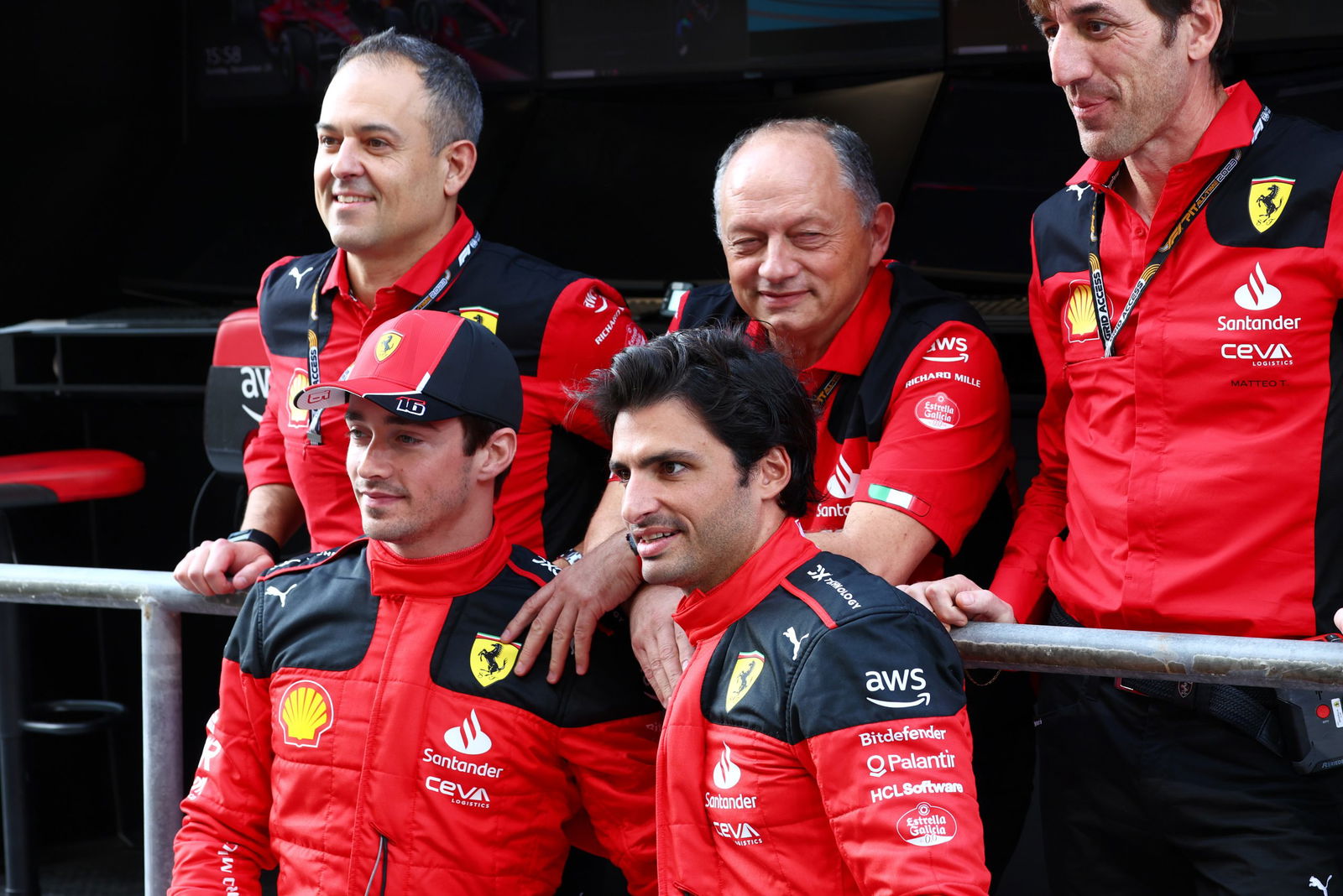
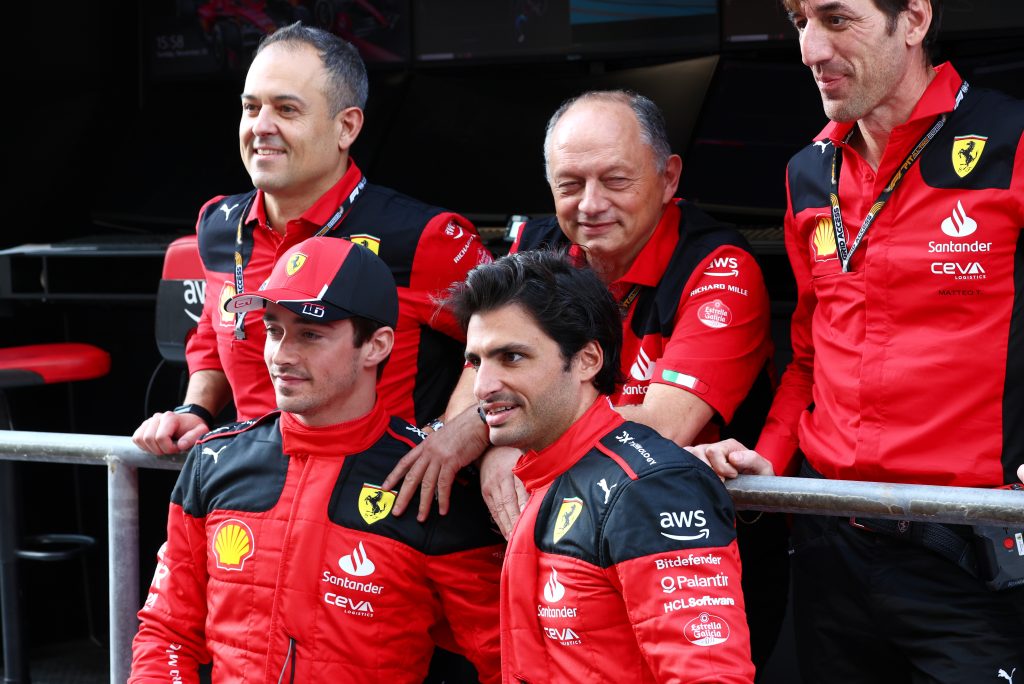
Without a doubt, Ferrari is the most potent, evocative of names in Formula 1, and with it comes a certain level of responsibility, along with unimaginable scrutiny from an often hostile Italian media, and vociferous fans.
After 26 years in motorsport, when Vasseur replaced Mattia Binotto as team principal at the start of the year, he went into the role under no illusion as to the size of his task and what was required of him.
Under Vasseur’s watch, Ferrari finished third in the constructors’ championship, a position lower than a year ago, and 148 points worse off.
That would appear to suggest the season was disastrous, yet that would be a narrow-minded viewpoint as, in many respects, Ferrari’s season mirrored that of its closest rival over the past campaign, Mercedes.
Emerging from a difficult first year of the ground-effect aerodynamic regulations, both went into 2023 with high hopes they had a better understanding of the rules, unveiling cars they believed would push Red Bull.
That was far from the case as both struggled, quickly recognising the deficiencies of their cars, doing what they then could to address the issues within the confines of the budget cap, before ultimately opting for a wholesale redesign for 2024.
For Vasseur, in particular, the Frenchman also has a degree of breathing space, being afforded the benefit of the doubt after heading into Maranello as a stranger in a strange land given his predecessors were long steeped in Ferrari’s traditions.
Vasseur did not start until early January, from which point up until the launch of the car on February 14, there were just over four weeks, and from there, only 19 days until the first race in Bahrain.
Even by the time of the fifth race in Miami, Vasseur was still attempting to understand the functions of all the many departments inside Maranello and the workings of the 1000-plus staff.
Ultimately, it has to be remembered that the SF23 was a car he inherited from Binotto and his technical team, hence the leeway in his favour at the end of a year in which there were signs of progress late on.
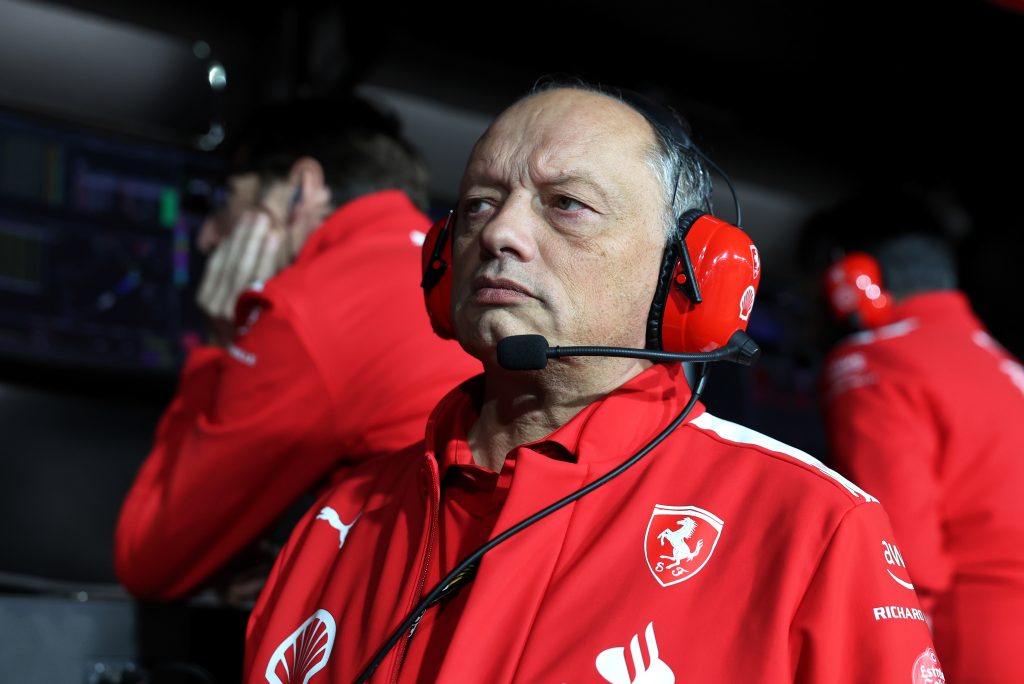
From a personal perspective, Vasseur concedes he is still learning on the job.
“To be able to get up to speed, I need to do much more,” said Vasseur, in an interview with Speedcafe.
“It’s a big team, with both the engine and chassis departments, and it’s a very large organisation.
“I need to know everybody, I need to know the details of the organisation, to understand the particularity of the team.
“For sure, it’s much better than it was several months ago, but we still have a lot to do, a lot of room for improvement. At least on this side, I need to take a step.
“I knew beforehand that it would be a challenge, a big one, and so what has since happened has come as no surprise at all.
“I don’t think I underestimated the challenge, it is what it is. I just have to do it properly and, step by step, to improve.”
The first few races were a maelstrom, with Charles Leclerc retiring in Bahrain with a power unit failure that cost him places on the grid after qualifying second in the following race in Saudi Arabia, followed by a lap-one collision with Aston Martin’s Lance Stroll a fortnight later in Australia.
Team-mate Carlos Sainz was also involved in his own incident late on at Melbourne’s Albert Park which left Ferrari, after just three races, 97 points adrift of Red Bull in the constructors’ championship.
Leclerc’s performance in Baku – on pole for both the sprint and grand prix in which he finished second and third respectively – was a false dawn as the team struggled for pace and consistency from a car that left both drivers, at various stages, voicing their unhappiness with its performance.
Leclerc, in particular, described the car as “undrivable” after being eliminated from Q1 for the Spanish Grand Prix.
Slowly but surely, Ferrari started to correct the car’s faults, culminating in a strong second half of the season after the summer break, albeit punctuated by wretched bad luck at times that cost it second place in the constructors’ standings.
Sainz, especially, was indomitable in Italy and Singapore where he was third and first, the latter denying Red Bull a perfect season of victories, whilst Leclerc was third in Mexico City, and second in the final two grands prix in Las Vegas and Abu Dhabi.
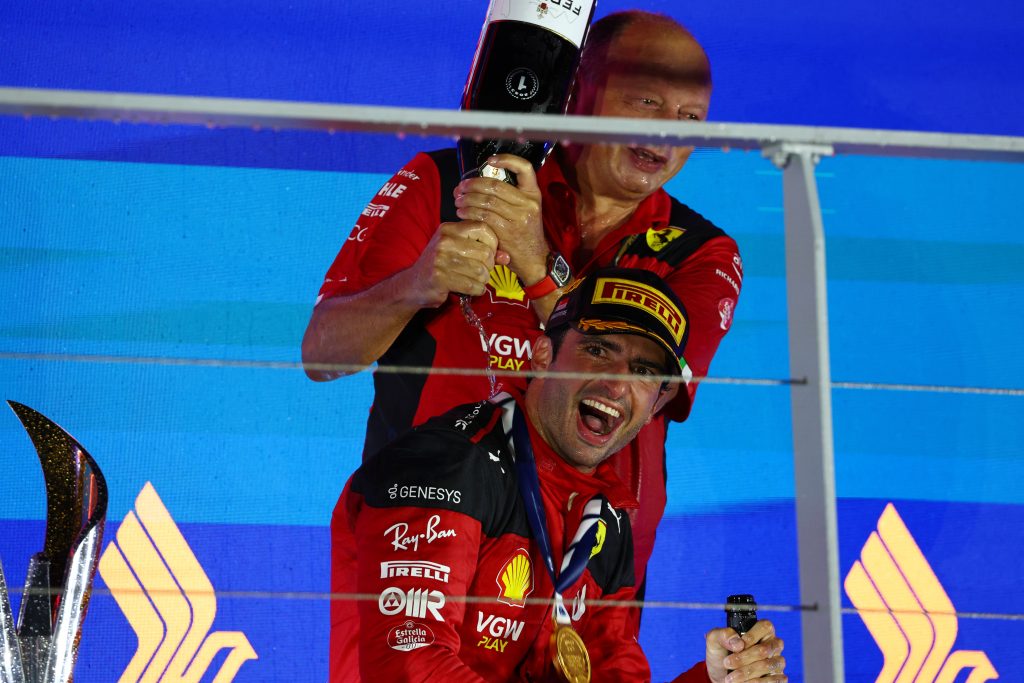
At least Vasseur has a platform on which to build the Scuderia for 2024, even if his team is fundamentally changing the architecture of the car.
Explaining the difficulties his team faced over the past year, he said: “A lot of it is about drivability and the potential of the car, and fine-tuning. It’s not as it was before, about a car that is much easier to set up and downforce.
“You can see that between two different setups, you can have a huge difference, something we have never had in the past.
“It means we have to make a step with this, to have a car that is easier to drive, that is more consistent, is perhaps a bit less aggressive because we showed good potential in quali overall.
“As I say, it’s fine-tuning. Over a weekend, you can have different track temperatures but two cars in the same team can be separated by a second, like Mercedes, like us.
“That’s unusual. It means the cars are very, very on the edge, and for almost nothing, you can be on the right or wrong side.
“It’s where Red Bull is doing a better job than everybody else.”
There are gains to be made, as Aston Martin proved with its leap in performance last winter, and as McLaren showed when it launched its major upgrade packages in Austria and Singapore that propelled it from near the back to the front of the grid.
With its major redesign, a similar leap forward from Ferrari could push it closer to Red Bull, particularly as its team principal Christian Horner is convinced there will be greater convergence due to what he feels will be the limited gains available off the back of its dominant RB19.
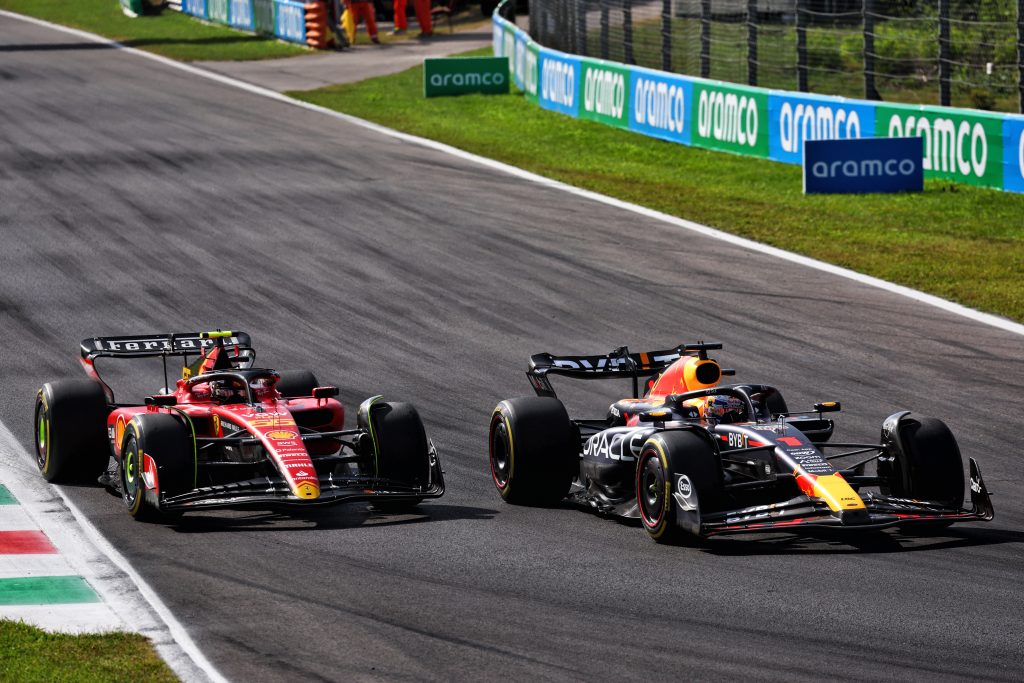
“We are improving and we will continue to improve, to make a big step,” assessed Vasseur.
“It’s about the potential of Ferrari and the potential of Red Bull. I don’t know what Red Bull did over the winter (from RB18 to RB19), and also they stopped development earlier compared to everybody else, which means they will have the biggest step for next year than everybody else.
“Again, a lot of it is about the drivability, the consistency of the car, and this is very difficult to anticipate in a simulator.
“It’s much more in the hands of the drivers than before, and I would say, it’s a good opportunity for a team to come back because we have this room for improvement.”
Vasseur is aware, however, that the goodwill he will be carrying over from 2023 into 2024 will only go so far.
The 55-year-old has his own high standards, which is why he “can’t be satisfied” with the season, even if it was his first year when he was very much a passenger learning the ropes rather than someone with their hand firmly on the tiller.
“It was not the season that was expected, mainly because we were too far away at the beginning, that when we put the car on track, we suffered a lot,” said Vasseur.
“I would say that we had a good reaction, and I’m quite pleased with what we did over the second part, which is good from my perspective because it means this is putting the team on the right way.
“We never overreacted, we never lost the pace of the season. Step by step we were able to come back.
“Overall, collectively, I think we did a good job. Now we have to find consistency and I think we’re on the right track.
“At least we have the potential, and it’s promising.”





















Discussion about this post